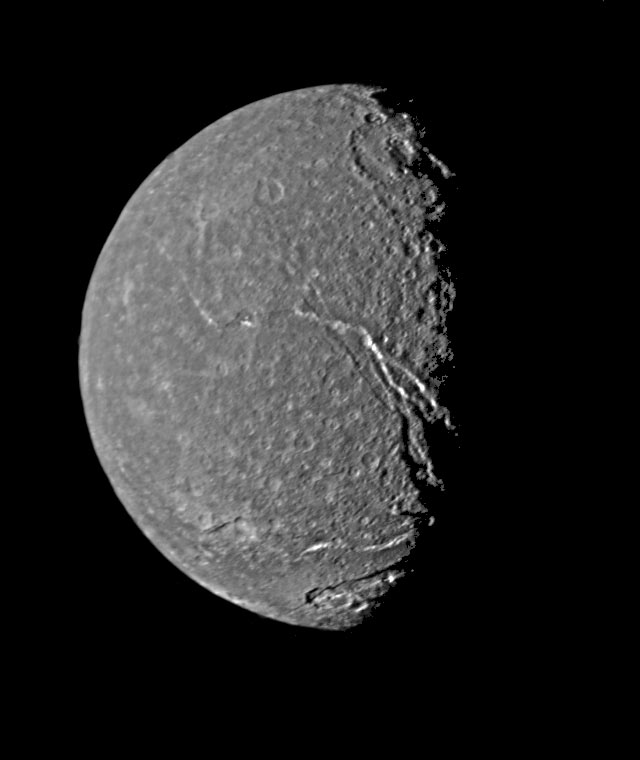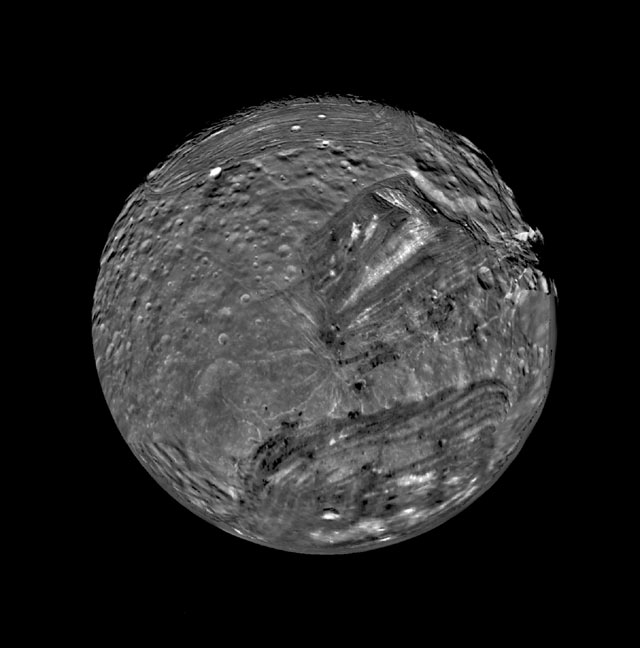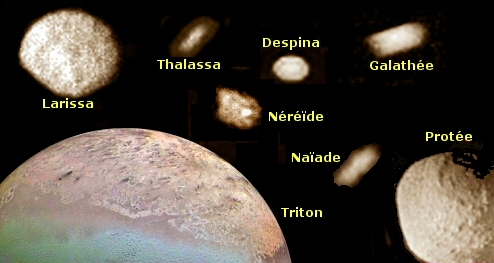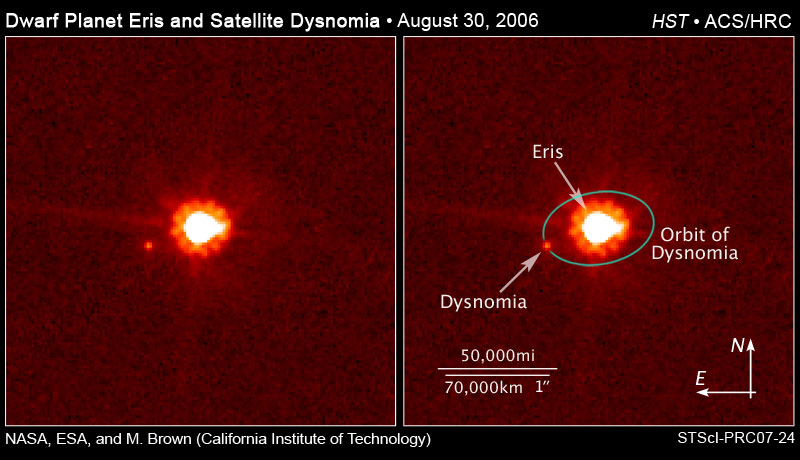Moons of Neptune, Uranus and Kuiper Belt Objects
Data on these distant worlds isn't as plentiful as other planets because only
Voyager 2 has imaged Neptune, Uranus and their moons and sadly, no future missions are planned to
go to Netune and Uranus in the foreseeable future. Here is a basic description of what we do know:
Uranus has 5 major moons and over 20 lesser
satellites named after Shakespearean characters.
These objects are predominately ices and some amount of rock. They orbit in the same plane as Uranus' rotation. Here are the major moons (Image credit: Voyager II, NASA/JPL)
 |
 |
| Umbriel |
Ariel |
 |
 |
| Oberon |
Titania |
Miranda's fractured surface


Miranda is the most unusual of the moons.
It is the innermost of the large moons and undergoes the most tidal forces.
Its features include:
- Coronae probably caused by meteor impacts rather than volcanic upwelling
- Large ridges, fractures surface that looks put together.
- Origins are a mystery. It is thought to be a reformed world, that is, it broke apart
and reassembled again.

Location of Miranda with respect to ring
system (Image credit: NASA)

 Triton is the largest moon of Neptune. It is believed to be a
captured Kuiper Belt Object (KBO) because it orbits in retrograde to Neptune's spin. Yes,
it orbits backwards and it is the only moon to do so in the solar system. Because of this, the
orbit will eventually degrade and Triton will venture closer to Neptune,
breaking apart and and potentially forming a ring.
Characteristics of Triton:
Triton is the largest moon of Neptune. It is believed to be a
captured Kuiper Belt Object (KBO) because it orbits in retrograde to Neptune's spin. Yes,
it orbits backwards and it is the only moon to do so in the solar system. Because of this, the
orbit will eventually degrade and Triton will venture closer to Neptune,
breaking apart and and potentially forming a ring.
Characteristics of Triton:
- Volcanic
- Coldest temperture measured in solar system - surface is nitrogen
- Thin atmosphere of Methane and Nitrogen
- Surface described like "cantaloupe" skin.
Triton



Kuiper Belt Objects
Hubble Space Telescope has detected Kuiper belt objects
bigger (and some
smaller) than Pluto (which inevitably lead to its demotion to dwarf planet status).
Objects are approximately 30-50 AU from the sun - although their orbits are very eccentric and
distances can vary. They are at most 1/100th the volume of Earth and are rock-ice in composition
(unlike the frozen volatile worlds of the gas giants).







New Horizons is en route to Pluto and the Kuiper
belt (will arrive mid 2015).
It is the fastest spacecraft yet - it reached Jupiter in 13 months and took some images while
getting a gravity assist
Jupiter Hi Res cloud tops
Jupiter Storm
Eclipsed Io and Lava
Beyond the Kuiper Belt
Voyager I and II continue their journeys. Presently, they are investigating where interstellar
space begins. They are the furthest man-made objects still in operation in thanks to some
excellent engineering.
Where are the Voyagers?




















